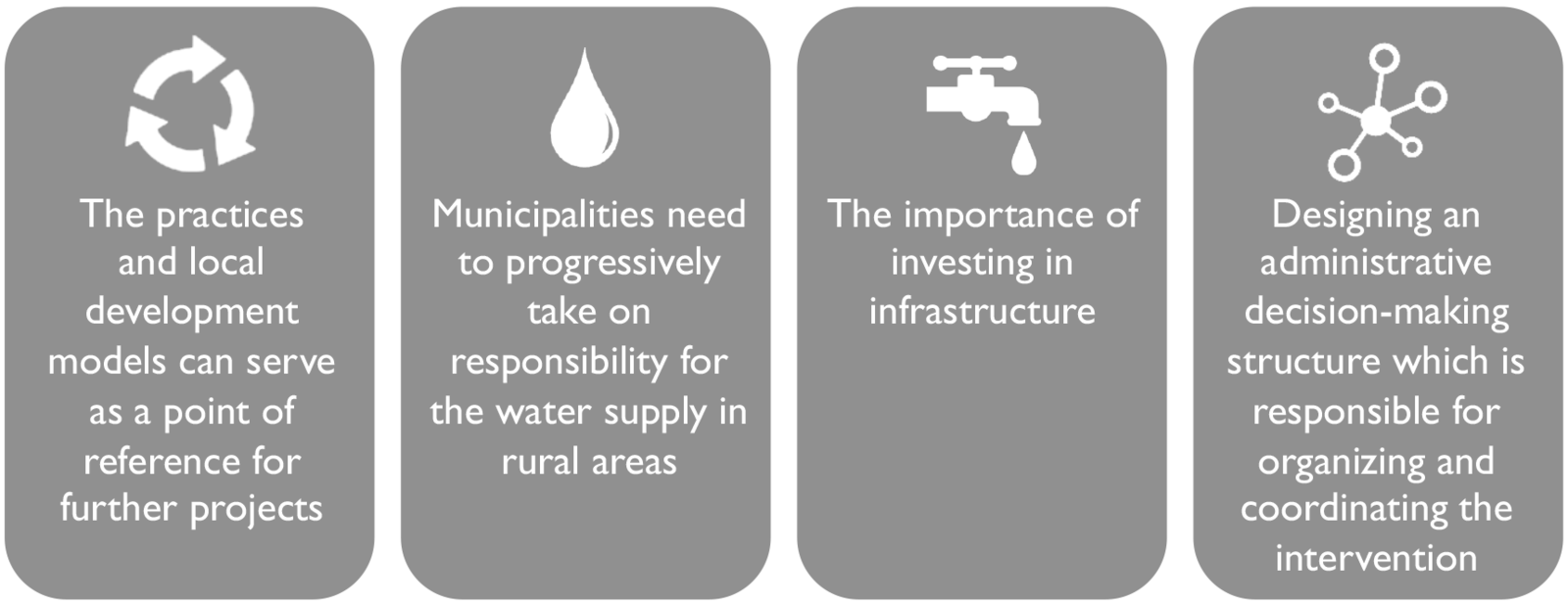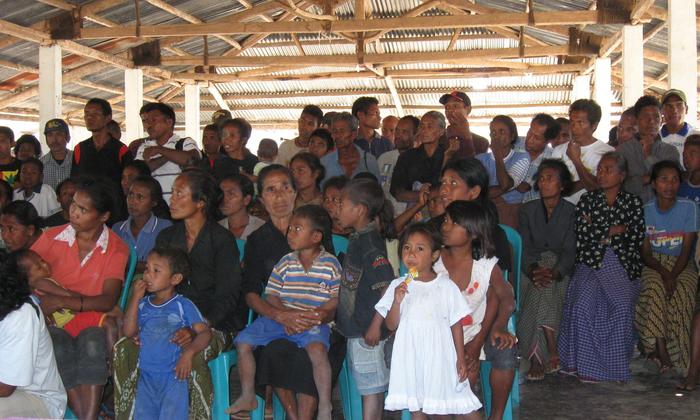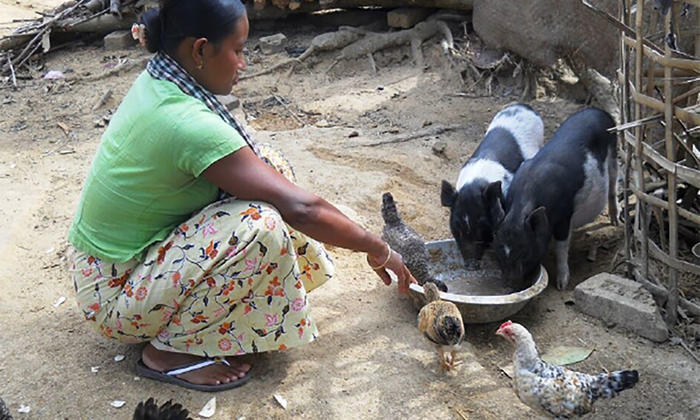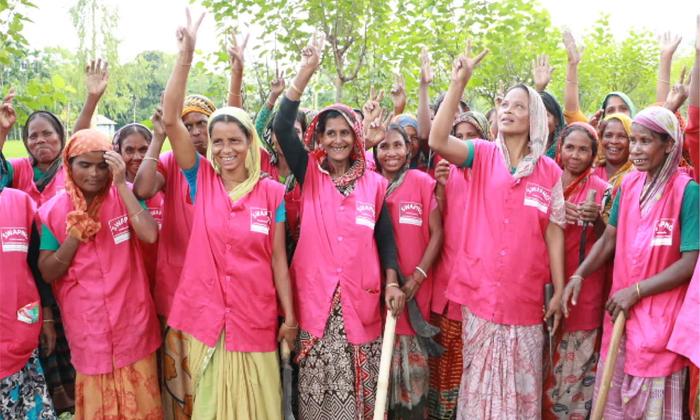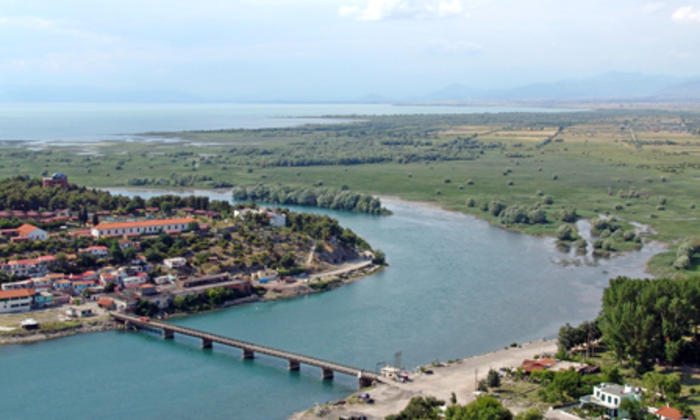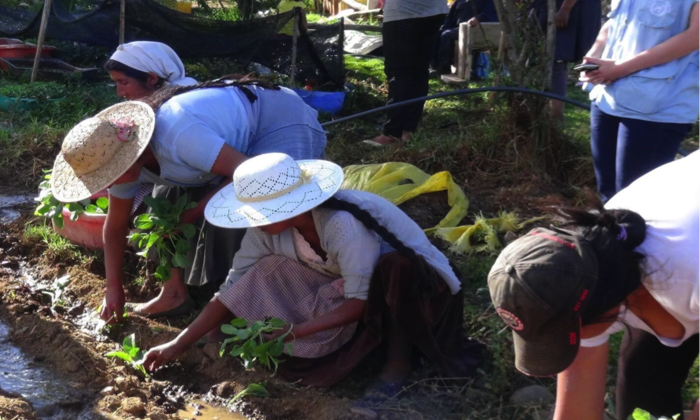The problems of the water resources sector in Ecuador stem from the contamination of its rivers and other bodies of water; a reduction in the availability of water flows in the sierra; overexploitation of aquifers on the coast; a severe reduction of glaciers; and a reduction in the historical area of the Paramos, which naturally regulate water flow
Case study
Water governance in Ecuador
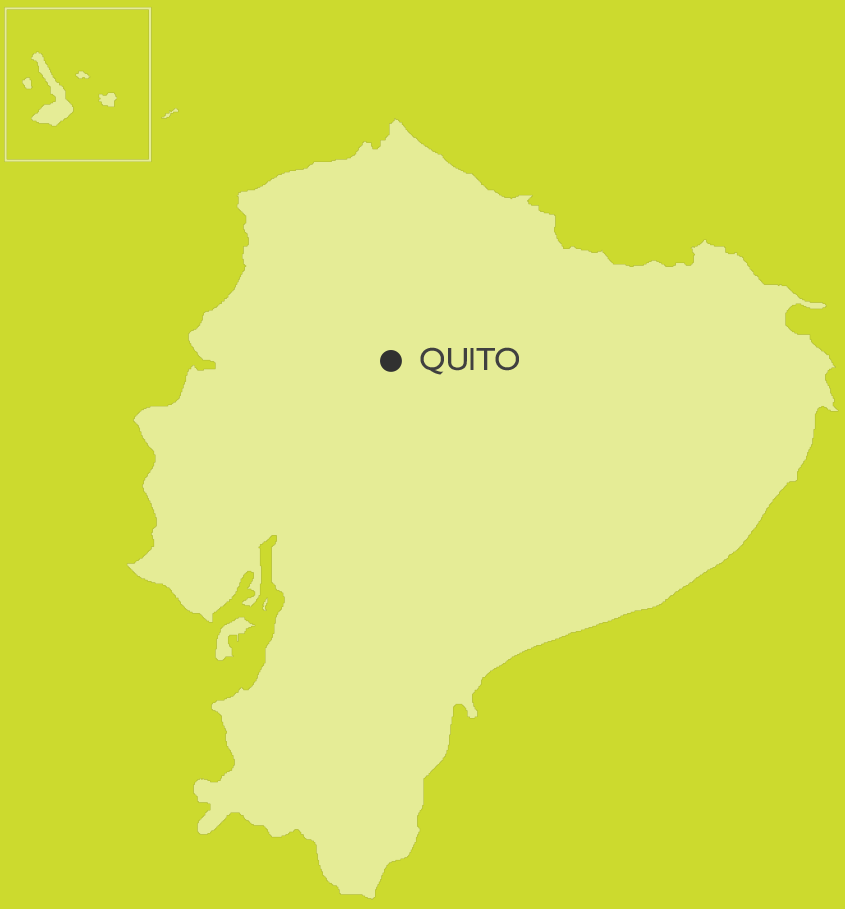
SDGs ADDRESSED
This case study is based on lessons from the joint programme, Governance in the water and sanitation sector in Ecuador
Read more
Chapters
Project Partners
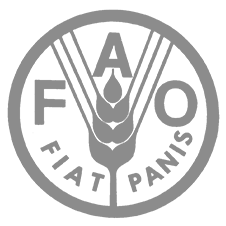
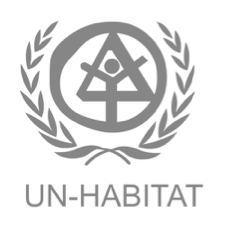
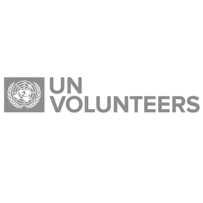
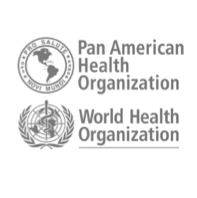
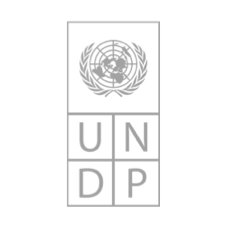
1. SUMMARY
The objective of the programme was to contribute to the implementation of the National Water Plan and the construction of democratic and sustainable governance of water and sanitation services in Ecuador, with an integrated management focus for each watershed, promoting social, land and gender equality.
The intervention was focused on four main areas:
- Strengthening local and national capacities for the implementation of a new agreed regulatory and institutional framework for the water sector and the water and sanitation sub-sector. To achieve this, an Integrated Management Strategy for each watershed and a National Water Plan Strategy were drawn up, with actions to preserve aquifers and the quality of water sources.
- Improving the technical, social, environmental, institutional and financial sustainability indicators of the water and sanitation service providers in the four provinces involved in the intervention: Esmeraldas, Bolívar, Los Ríos and Manabí. This included developing guidelines for establishing associations for the efficient and equitable provision of services.
- Empowering social organizations to influence the formulation of regulatory frameworks, quality monitoring and the sustainable management of water services.
- Building infrastructure in 20 cantons in the four provinces, alongside hygiene and environmental education campaigns, and strengthening the capacities of local institutions and social organizations in the areas of health and environmental education.
The intervention improved access to drinking water and sanitation services for 28,000 people, who now enjoy full exercise of their right to water. The aim of this case study is to showcase learning, results and practical examples in order to reinforce awareness on water and its governance.
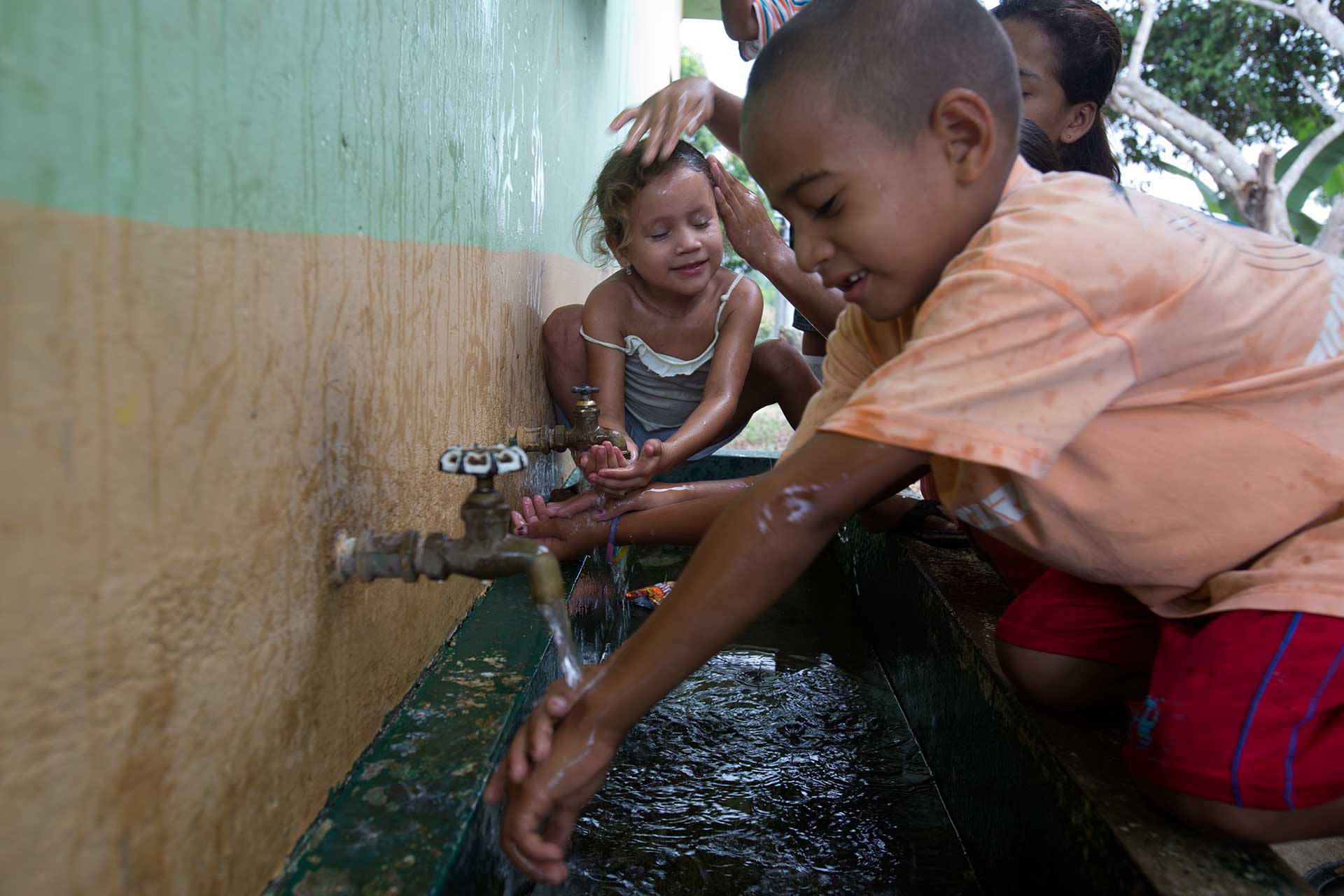
Infrastructure was built in 20 cantons in the four beneficiary provinces
2. THE SITUATION
Ecuador’s National Development Plan 2007-2010 and the National Buen Vivir [Good Living] Plan 2009-2013 prioritised the promotion of integrated water management by watershed, encouraging a new water culture from a human rights perspective.
The problems of Ecuador’s water resources sector are seen as a determining factor for the country’s sustainable development. The water resources situation is characterised by: the existence of rivers and other bodies of water contaminated with organic loads, toxic substances, hydrocarbons and pathogenic microorganisms; a reduction in the availability of surface water flows in the sierra and over exploitation of aquifers on the coast; a severe reduction of glaciers (33 per cent in the last 50 years); and a reduction of at least 25 per cent in the historical area of the Paramos, which naturally regulate water flow.
As regards the management of water resources, Ecuador has had no national water policies and the focus on watersheds has not been considered until recently. Hydrological information which could be used to plan a rational integrated management strategy is of poor quality and out of date. Furthermore, the tariffs being charged for water do not represent the real cost of the service and are wholly insufficient for maintaining a sustainable management system. In summary, the management of water resources in Ecuador has been characterised by weak coordination between the institutions and the stakeholders involved in water management and an inadequate level of citizen participation in decision-making. Legislation relating to water and natural resources lacks an integrated management focus. This is compounded by the limited institutional capacity and sector management in water and sanitation services, irrigation and hydroelectric, industrial and other usage.
The change in the management of water resources started with the establishment of the new National Water Secretariat (SENAGUA). This body has the task of designing and implementing the National Water Plan, which set out strategies and actions covering everything from the national level to the level of individual watersheds. In this new context, this programme contributed to advances made towards achieving the Ecuadorian Government’s goals, by supporting the implementation of measures that guarantee access to safe water as well as the integrated management of water and sanitation services.
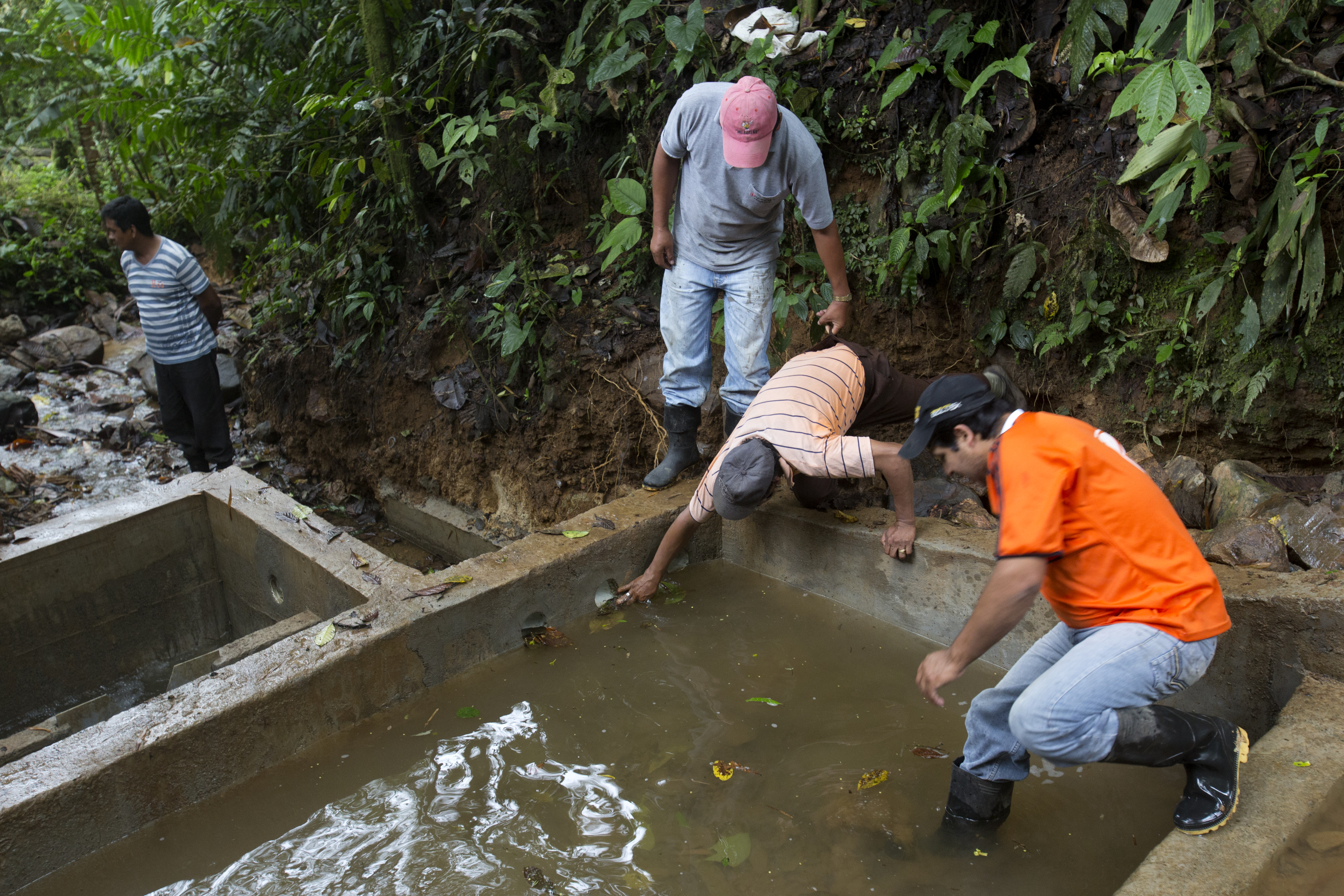
Capacity training included topics such as water maintenance, administration, monitoring and protection of water sources
3. STRATEGY
The objective of the programme was to contribute to the implementation of the National Water Plan and to building democratic and sustainable governance of water and sanitation services, with a focus on integrated water management for each watershed, promoting social, land and gender equality.
The intervention was centred on 20 cantons in the provinces of Esmeraldas, Manabí, Los Ríos and Bolívar. The public institutions responsible for the management of water resources (SENAGUA, the
Ministry for Urban Development and Housing and the Ministry of Public Health) participated actively in the implementation of the intervention. The intervention was put together within the process of State reform, under the framework of the National Buen Vivir Plan 2009-2013.
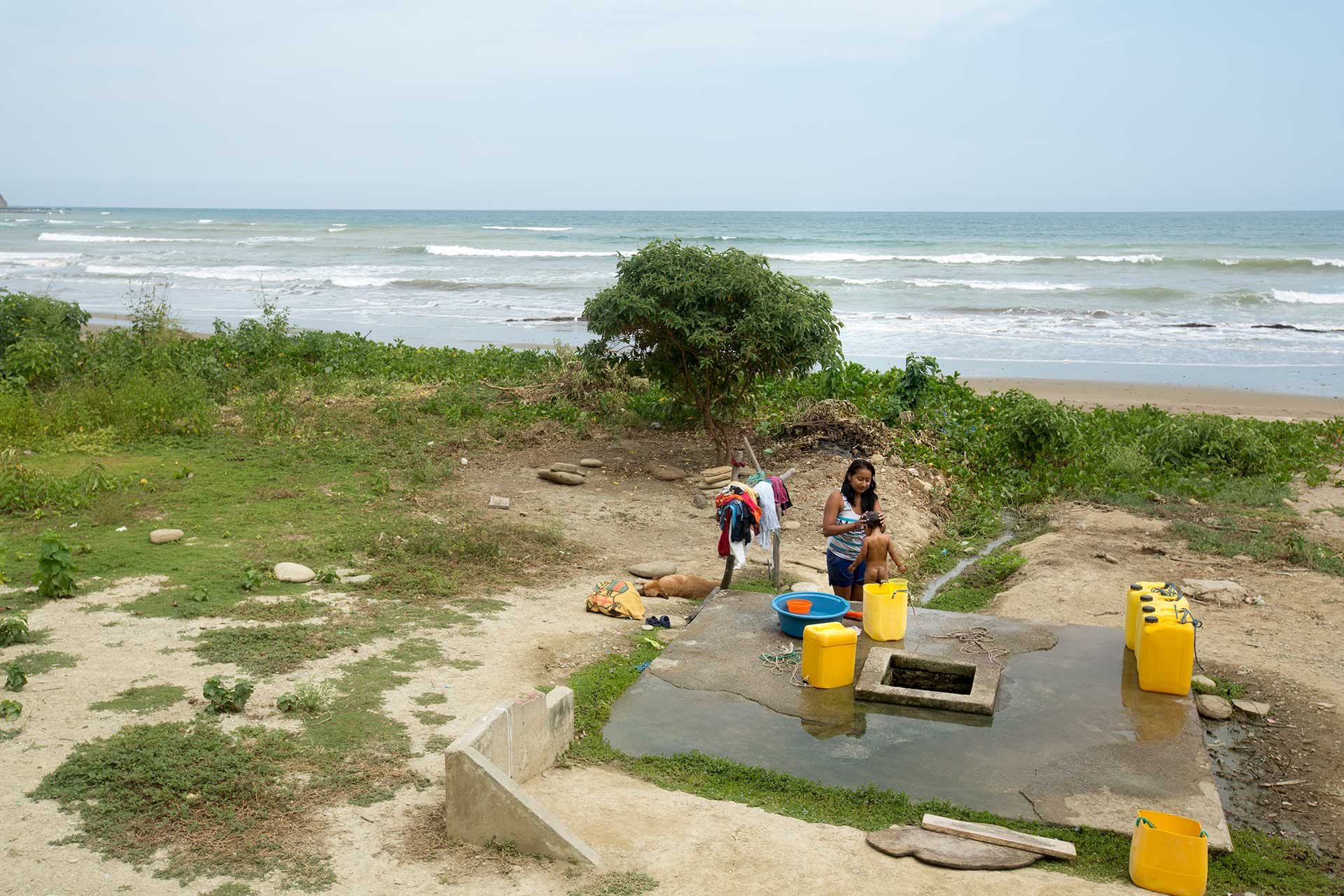
Gender inequalities influence the participation of men and women in the use and management of water
The strategy focused on four main areas:
- Strengthening local and national capacities for the implementation of a new agreed regulatory and institutional framework for the water sector and the water and sanitation sub-sector.
- Improving the technical, social, environmental, institutional and financial sustainability indicators of water and sanitation service providers in the four provinces involved in the intervention.
- Empowering social organizations to influence the development of regulatory frameworks, quality monitoring and sustainable management of water services.
- Building infrastructure in 20 cantons in the four provinces, alongside hygiene and environmental education campaigns, and strengthening the capacities of local institutions and social organizations in the areas of health and environmental education.
4. RESULTS AND IMPACT
The programme improved access to drinking water and sanitation services for 28,000 people, who now enjoy full exercise of their human right to water. Of these beneficiaries, 6,976 are pupils at schools with improved sanitation infrastructure. The programme strengthened local and national capacities for the implementation of public policies, with a human rights focus. The main achievements are as follows:
National and local capacities for the implementation of a new agreed regulatory and institutional framework for the water sector and the water and sanitation sub-sector were strengthened, from a human rights perspective. The project made a significant contribution to the design of the “National Public Policy for Water with a Human Rights Focus”. The draft bills on water and on drinking water and sanitation services were aligned. To achieve this, an integrated management strategy for each watershed and a strategy for the National Water Plan were formulated, with actions to preserve aquifers and the quality of water sources. Ecuador now has three public policy instruments for integrated water management: The Socio-Cultural Water Policy; a Water Dialogue methodology; and a community Bio-Monitoring Guide for the protection of water sources. The Ministry for Urban Development and Housing was supported by an international team in the formulation of the Sector Public Policy for which it has responsibility, which covers the Housing, Habitat, and Drinking Water and Sanitation Services sectors.
Meanwhile, the capacities of the drinking water and sanitation service providers were strengthened. Training included topics such as water maintenance, administration, accounting, participation, gender equality, accountability, water quality, monitoring and protection of water sources. A guidebook on associative provision of drinking water and sanitation services was produced, to ensure that this knowledge continues to be passed on. More than 50 drinking water administrative boards had their capacities as service providers comprehensively strengthened, and more than 100 municipal and national government workers received training to provide technical support to the drinking water administrative boards in their cantons.
Technical, social, environmental, institutional and financial sustainability indicators of water and sanitation service providers in the four provinces involved in the intervention were improved. This included developing policies for establishing associations for the efficient and equitable provision of services. The National Plan on Water Quality Monitoring was designed and piloted. Numerous analyses of water sources and community households were carried out as part of this work, allowing the water quality to be improved to meet the standard. Meanwhile, the Inventory of Appropriate Technologies for drinking water and sanitation was developed, training a significant number of technicians in methodology for sanitation systems design. Three ecological sanitation projects were set up and, based on this experience, the “Guidebook on Permaculture for Ecological Sanitation” was published.
The intervention improved access to drinking water and sanitation services for 28,000 people, who now enjoy full exercise of their right to water
Social organizations were empowered to influence the development of regulatory frameworks that will govern water services, quality monitoring and the sustainable management of these services. Working in coordination with the Secretary of People, Social Movements and Citizen Participation, spaces were set up for citizen participation and accountability. Children and adolescents were involved in setting up six ecological clubs in the Association of Ecuadorian Municipalities’ National Network of Ecological Clubs, and in the “Nueva Cultura del Agua” [New Water Culture] campaign in ten educational centres in the selected communities. In these activities the children were encouraged to improve their hygiene practices.
Infrastructure was built in 20 cantons in the four provinces. Infrastructure work was carried out on drinking water systems in 61 communities, improving access to water for 28,000 people. The programme financed and built 145 basic sanitation units (with flushing water) and 77 ecological sanitation units (dry toilets). Toilet blocks were refurbished or new ones built in 13 schools in the communities where drinking water systems were built.
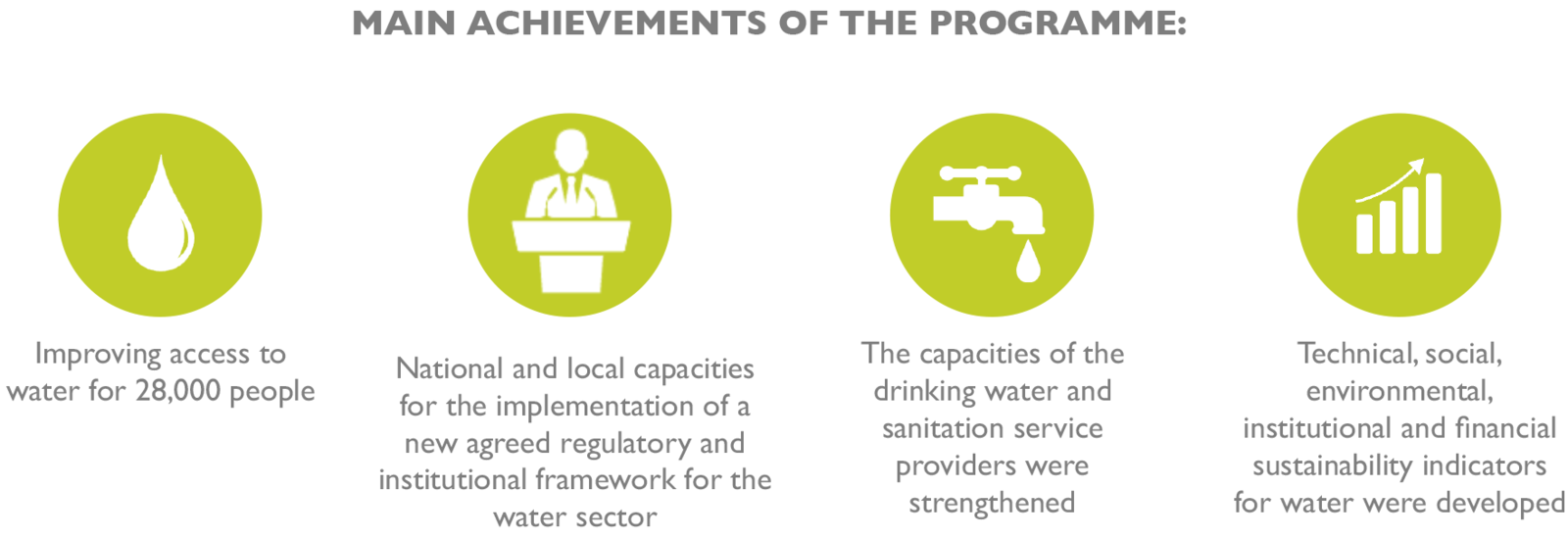
5. CHALLENGES
- Although the participation of different United Nations agencies was found to be a very effective multidimensional methodology in terms of getting results, there was a degree of instability in the inter-agency coordination unit during the first half of the programme. At the beginning there were three national coordinators and the Bolívar province did not have a provincial coordinator for almost a year. Two agencies were also immersed in a restructuring process involving staff reductions, which meant a loss of programme knowledge. There needs to be a guarantee from the outset that programmes have a clearly defined communication strategy between the stakeholders, which affords all of the recipients a deeper understanding than is provided by occasional promotional events. At the same time, the programme’s national coordinating body must be equipped with effective mechanisms to insist that each of the agencies fulfil its agreed commitments in order to guarantee the success of the programmes.
- The shortage of technical staff assigned to the sector by the Ministry for Urban Development and Housing and the urgent need to deal with serious water crisis situations limit the capacity of institutions to fulfil their stewardship and regulatory responsibilities or to deal with initiatives related to governance in the sector.
- SENAGUA’s institutional weaknesses at the watershed level limited the participation of its staff in the formulation of the National Water Policy and their active participation in integrated interventions on the ground.
- The time needed to activate the municipal mechanism for contracting infrastructure works took longer than anticipated. These works, especially those in Echeandía and Eloy Alfaro, were the ones that fell furthest behind.
- In Ecuador there is currently a high level of socio-political conflict arising from discussions on the protection of water and the environment.
- Staff changes in medium and long-term initiatives (more than two years) cause information voids and long adaptation processes, which can only be reduced by having continuous information strategies and keeping institutional records up to date. In order to guarantee the sustainability of good practices and organizational methods that have been set up, mechanisms must be devised to avoid the loss of human resources and technicians who have been trained during the programme process.

6. LESSONS LEARNED
- The programme constitutes a successful example of the capacity and impact of the United Nations system when its agencies work in a coordinated multidimensional way, with each one contributing their own knowledge and experience. However, it is very important for the roles of the different United Nations agencies to be made clear and for agreements to be established around the common objectives. This will provide mutual learning for the agencies and linked institutions.
- It is very important to define factors for success and to measure these after programme implementation against a baseline taken at the start of the programme, so that a proper comparison can be made between the initial and final situations. These factors can include qualitative health and social indicators such as community participation, empowerment of women and organizational strengthening.
- It is not advisable to support legal reform processes from fixed-term programmes, since these reforms are subject to parliamentary processes which fall outside the scope of international participation.
- Building infrastructure in the communities created work opportunities. Programmes must not limit their actions at that point, but must promote the fact that men and women can benefit on an equal basis from the employment opportunities created. Moreover, hiring local workers not only reduces programme costs but also generates greater community empowerment and sustainability of the works.
- It is important to incorporate a specific gender equality strategy into local development programmes, especially those involving advocacy around water management. An understanding of gender roles, relationships and inequalities can help to explain the choices which men and women make and the different options they have. These inequalities influence their perception of and participation in water usage and management.
- It is advisable to design indicators based on newly installed capacities, rather than on training processes. To measure progress against these indicators, the achievements made by participants must be evaluated after each course or workshop. Efforts must also be focused on standardising instruments for efficient water management.
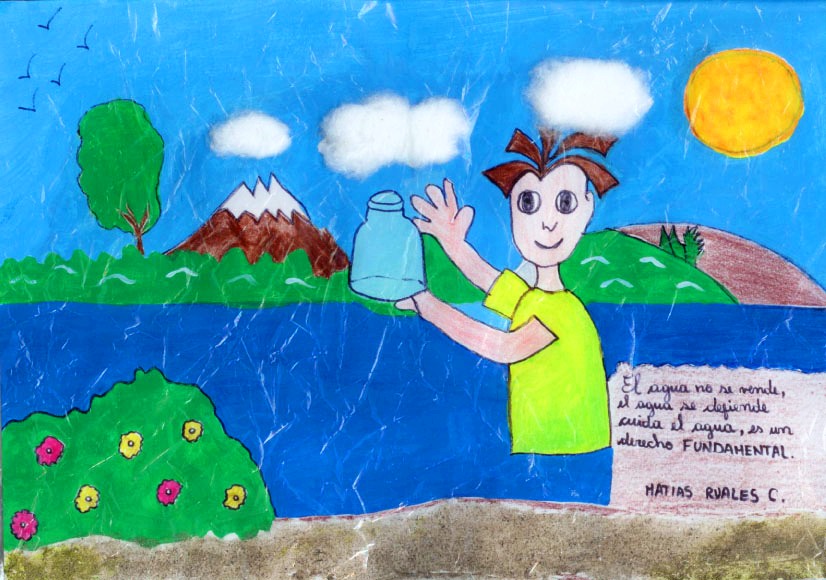
The improvement of drinking water and sanitation services at schools benefited some 7,000 pupils
It is important to incorporate a specific gender equality strategy into local development programmes on water management and governance. An understanding of gender roles, relationships and inequalities can help to explain the choices which men and women make and the different options they have
7. SUSTAINABILITY AND POTENTIAL FOR REPLICATION
The practices and local development models for health and water management promoted in the programme can serve as a point of reference for further projects carried out in Ecuador, and are also applicable to other countries.
However, the environmental, social and financial sustainability can be adversely affected primarily by the transition process in the political and legislative reform of the water sector and by the limited institutional capacity. Local and national institutions participated actively, although some deficiencies were observed. For example, municipalities need to progressively take on responsibility for the water supply in rural areas, whereas the majority currently only deal with supplying the urban sector.
The intervention contributed to the empowerment of civil society through participation and social dialogue mechanisms. The communities were not seen as mere beneficiaries but as collaborators and managers of their own development who actively participated in decision-making.
The importance of investing in infrastructure needs to be taken into account for future replication of the programme in order for water governance processes to be successful and sustainable. Both initiatives must go hand in hand, with the understanding that physical investment without social and institutional empowerment has no sustainability or ownership. At the same time, participation, empowerment and governance processes without tangible short to medium-term solutions can be frustrating for beneficiaries and therefore unsustainable.
In summary, the factors for success and sustainability are: 1) investing time and resources in getting to know the local partner and laying the foundations for the participation of beneficiaries and leaders of organizations and authorities; 2) defining the beneficiaries and the methodological steps from the earliest stages; and 3) designing an administrative decision-making structure which is responsible for organizing and coordinating the intervention.
